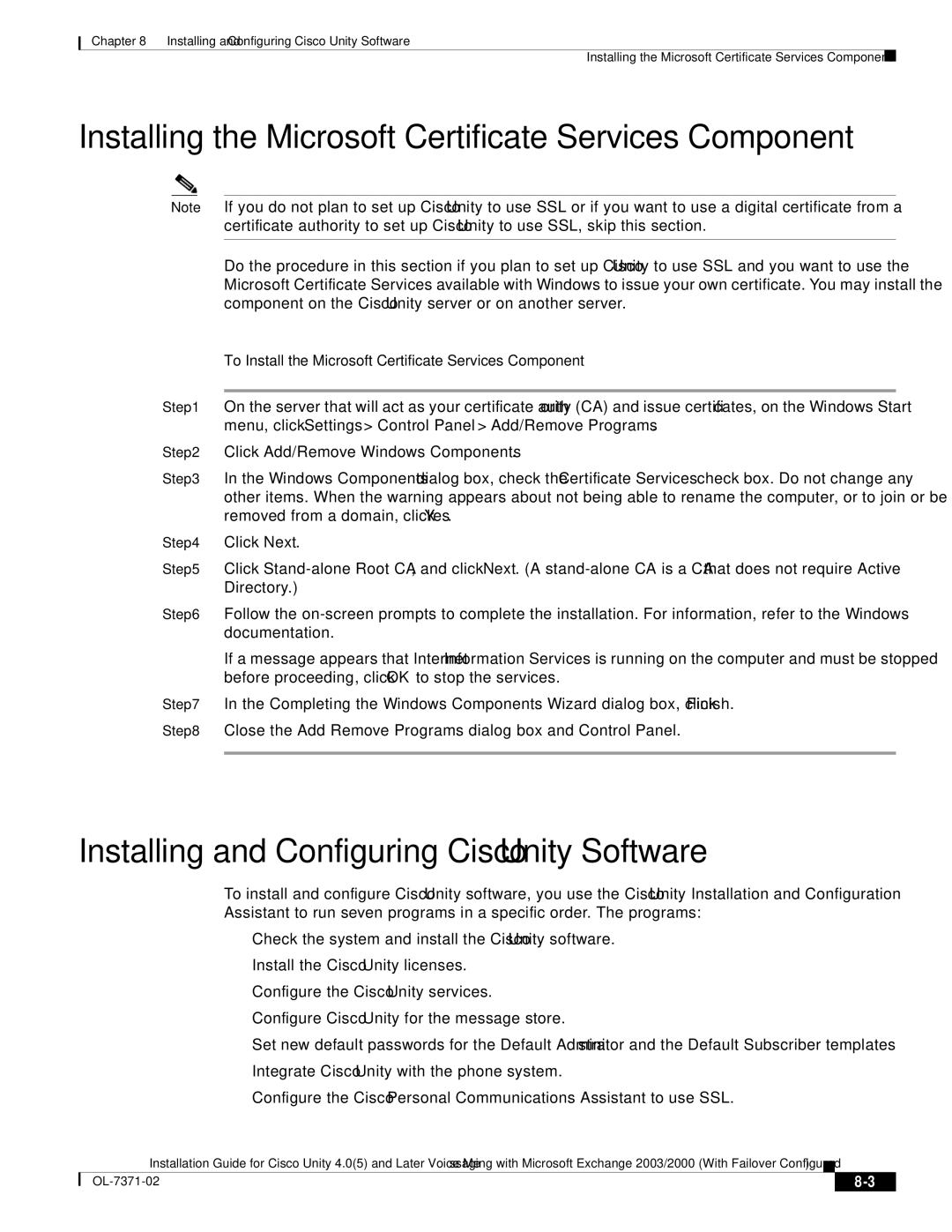
Chapter 8 Installing and Configuring Cisco Unity Software
Installing the Microsoft Certificate Services Component
Installing the Microsoft Certificate Services Component
Note If you do not plan to set up Cisco Unity to use SSL or if you want to use a digital certificate from a certificate authority to set up Cisco Unity to use SSL, skip this section.
Do the procedure in this section if you plan to set up Cisco Unity to use SSL and you want to use the Microsoft Certificate Services available with Windows to issue your own certificate. You may install the component on the Cisco Unity server or on another server.
To Install the Microsoft Certificate Services Component
Step 1 On the server that will act as your certificate authority (CA) and issue certificates, on the Windows Start menu, click Settings > Control Panel > Add/Remove Programs.
Step 2 Click Add/Remove Windows Components.
Step 3 In the Windows Components dialog box, check the Certificate Services check box. Do not change any other items. When the warning appears about not being able to rename the computer, or to join or be removed from a domain, click Yes.
Step 4 Click Next.
Step 5 Click
Step 6 Follow the
If a message appears that Internet Information Services is running on the computer and must be stopped before proceeding, click OK to stop the services.
Step 7 In the Completing the Windows Components Wizard dialog box, click Finish.
Step 8 Close the Add Remove Programs dialog box and Control Panel.
Installing and Configuring Cisco Unity Software
To install and configure Cisco Unity software, you use the Cisco Unity Installation and Configuration Assistant to run seven programs in a specific order. The programs:
•Check the system and install the Cisco Unity software.
•Install the Cisco Unity licenses.
•Configure the Cisco Unity services.
•Configure Cisco Unity for the message store.
•Set new default passwords for the Default Administrator and the Default Subscriber templates
•Integrate Cisco Unity with the phone system.
•Configure the Cisco Personal Communications Assistant to use SSL.
Installation Guide for Cisco Unity 4.0(5) and Later Voice Messaging with Microsoft Exchange 2003/2000 (With Failover Configured)
|
|
| |
|
|
